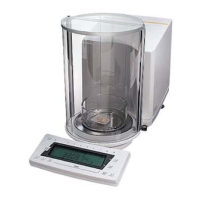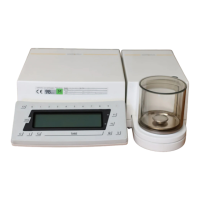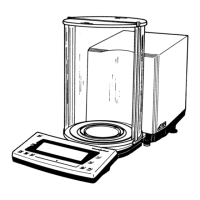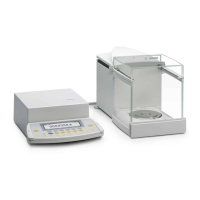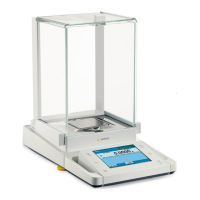1–18
General Instructions for Handling Samples
and Containers
As a general rule, the sample to be weighed should
be conditioned to the temperature of the balance.
This is the only way to avoid air buoyancy errors and
deviations caused by convection currents at the
surface of the sample. Since these effects increase
proportionally to the volume and surface of the
sample, make sure that the size of the tare vessel
selected is in the appropriate proportion to the size
of the sample to be weighed.
Never use your bare hands to touch samples
to be weighed. In addition to the effect on the
temperature, the extremely hygroscopic behavior
of fingerprints left on the sample will cause
considerable interference during weight measurement.
Use forceps or other suitable utensils to place your
sample carefully on the pan.
Working with your balance requires a steady hand
and a smooth, uninterrupted technique.
Perform a few trial weighing operations before you
begin with the actual weighing of your sample
because the temperature in the weighing chamber
may
differ from that of the balance’s surrounding
environment, if the weighing chamber has not been
opened for a relatively long period.
When you open the weighing chamber, a change
in temperature will inevitably occur, due to the
laws of physics, and may show up as a change
in the weight readout. In this case, we recommend
that before you begin
the actual weighing series you
open and close the
weighing chamber at the same
rate as you will be doing during weighing.
After the weighing chamber has been closed, the
weight readout will usually stabilize after about
10 seconds. The accuracy of the weight readout will
increase as you perform successive weighing
procedures with greater consistency.

